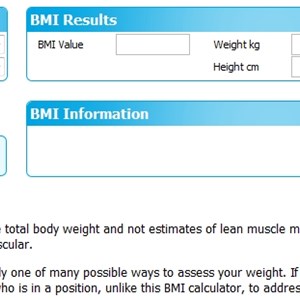

What are the health risks of being overweight or obese?īeing overweight, especially obesity, can increase the risk of a person developing many serious health problems, including: Overweight and obesity are conditions of excess weight that normally result from either excess energy (food) intake and/or insufficient physical activity.Ĭertain medications and medical conditions can also cause weight gain. They also do not apply to pregnant women, people with a medical condition involving enlargement of the abdomen, and people from certain non-European backgrounds who may have a different body shape. These waist circumference measurements only apply to adults, not to children. your risk is greatly increased at 102 cm or more.your risk is increased at 94 cm or more.your risk is greatly increased at 88 cm or more.your risk is increased at 80 cm or more.These are the waist circumference thresholds that indicate an increased risk of disease: Make sure the tape is snug, without squeezing the skin.This is roughly in line with your belly button. The correct place to measure your waist is halfway between your lowest rib and the top of your hipbone.Place the tape measure directly on your skin, or over no more than 1 layer of light clothing.To find out your level of risk, it is important to measure your waist circumference accurately. It is therefore a more accurate predictor of cardiovascular risk, type 2 diabetes in women and metabolic syndrome. Waist circumference is a better estimate of visceral fat, the dangerous internal fat that coats the organs. certain ethnic groups, such as Pacific Islander populations (including Torres Strait Islander peoples and Maori), Aboriginal peoples, South Asian, Chinese and Japanese population groupsĬarrying excess body fat around your middle is more of a health risk than if weight is on your hips and thighs.BMI is therefore less accurate in certain groups, including:

Limitations of BMIīMI is less accurate for assessing healthy weight in some groups of people because it does not distinguish between the proportion of weight due to fat or muscle. NEED TO LOSE WEIGHT? - Use the BMI Calculator to find out if your weight and waist size are in a healthy range. To find your weight classification (if you are an adult), see which of these BMI ranges your weight falls into: If you calculate your BMI yourself, it is important to make sure you measure your weight in kilograms and your height in centimetres. Healthdirect BMI calculator indicates any health risks in relation to your BMI or waist circumference, and offers information based on your personal results.

It provides an estimate of total body fat as a proportion of total body weight and the risk of developing weight-related diseases.īMI is calculated by dividing weight by the square of height as follows: What is body mass index (BMI)?īMI uses weight and height to determine whether an adult is within the healthy weight range, underweight, overweight or obese. Health professionals often use BMI and waist circumference together to assess whether someone is overweight or obese and to assess their risk of cardiovascular disease and diabetes. Waist circumference is considered a good estimate of your body fat, especially your internal fat deposits, and your likelihood of developing weight-related disease. Two methods that are commonly used to estimate whether you are a healthy weight or not are body mass index (BMI) and waist circumference. Being overweight or obese can cause many serious health problems. More than 6 out of 10 Australian adults are overweight or obese and that figure is rising.


 0 kommentar(er)
0 kommentar(er)
